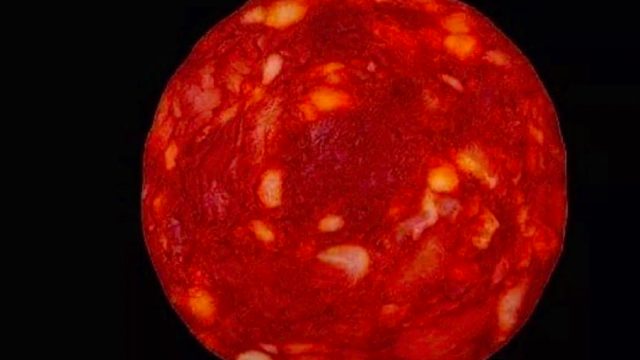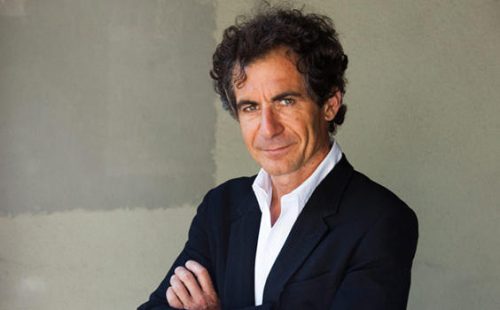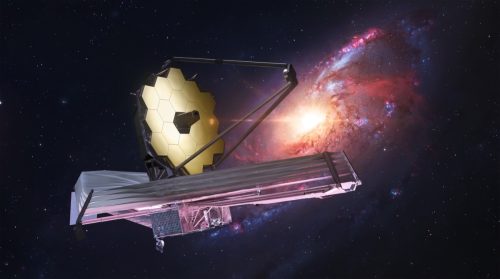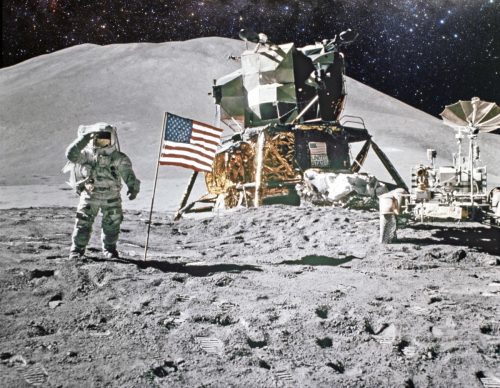Scientist Admits “Space Telescope Image” is Actually Chorizo Slice
The scientist shared an image of a “star” which was actually a chorizo, as a joke.

The Webb telescope, the most powerful telescope ever sent to space, has sent back astonishing images from the outer limits, all of which go immediately viral on Twitter. The shiny lights, the vibrant colors, the deep blackness of space–all causes for awe and wonder. So it was unsurprising when a top scientist shared a new one, of a blazing red circle with glints of white inside, people took him at his word and cheered. Unfortunately, it wasn’t a photo from space at all. It was a slice of chorizo. Read on to see how this hoax got out of hand, and to see why people thought a slice of meat was a star.

Étienne Klein, a “celebrated physicist and director at France’s Alternative Energies and Atomic Energy Commission” (per CNN), shared the image on Twitter on July 31st. “Picture of Proxima Centauri, the nearest star to the Sun, located 4.2 light years away from us. It was taken by the James Webb Space Telescope. This level of detail… A new world is unveiled everyday,” he told his 91,000-plus followers. (In the original French: “Photo de Proxima du Centaure, l’étoile la plus proche du Soleil, située à 4,2 année-lumière de nous. Elle a été prise par le JWST. Ce niveau de détails… Un nouveau monde se dévoile jour après jour.”) His tweet soon went viral, generating hundreds of comments.

Klein later admitted he was joking. “Well, when it’s cocktail hour, cognitive bias seem to find plenty to enjoy… Beware of it. According to contemporary cosmology, no object related to Spanish charcuterie exists anywhere else other than on Earth,” he Tweeted. Upon further backlash, he added: “In view of certain comments, I feel obliged to specify that this tweet showing an alleged picture of Proxima Centauri was a joke. Let’s learn to be wary of the arguments from positions of authority as much as the spontaneous eloquence of certain images.” Along with being humorous, all he wanted to do was “to urge caution regarding images that seem to speak for themselves.”

Most space photos have been altered in one way or another, not to distort reality but to make them more accurately reflect what a human eye might see. “A satellite image is really a composite of many images taken over a period of time, using data from infrared and ultraviolet light sensors as well as light from the visible spectrum. So when NASA’s Cassini spacecraft flies past Titan or Tethys on its orbit around Saturn, the resulting images must be color-corrected to show what they might look like to human eyes,” reports CS Monitor.

“After six months of unfolding, instrument testing, and finally, data gathering, the James Webb Space Telescope mission released its first collection of full-color images and other data on July 12, 2022. This collection demonstrates that the telescope is working properly, and showcases what it can do—reveal a universe unlike anything we have seen before,” say the folks behind the Webb Space Telescope. “Remarkable images gave the public a window into the world of Webb engineers and instrument scientists as they worked to align the 18 primary mirror segments, including the telescope’s social media-ready ‘‘selfie’ images.”
RELATED: Two Galaxies Crashed Together and This Is What it Looked Like After

Many followers took the chorizo joke for what it was, a stab at humor, and shared their own slices of charcuterie in response. Others were saltier and felt duped. There is a history of controversy surrounding space hoaxes, raising sensitivities. Most famously, a rumor continues to spread about the moon landing being a hoax. Some have even claimed that Stanley Kubrick shot the footage in a film studio. “Apollo 11 astronauts Neil Armstrong and Buzz Aldrin stepped onto the lunar surface on July 20, 1969. Even back then, some people were skeptical that the feat was technologically possible,” reports Space.com. “The James Bond movie Diamonds Are Forever, for example, had a joke about faked moon landings just two years later, in 1971.” The 1977 film Capricorn One portrayed a faked landing on Mars.














